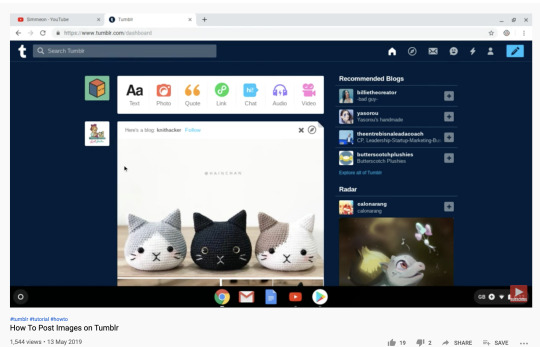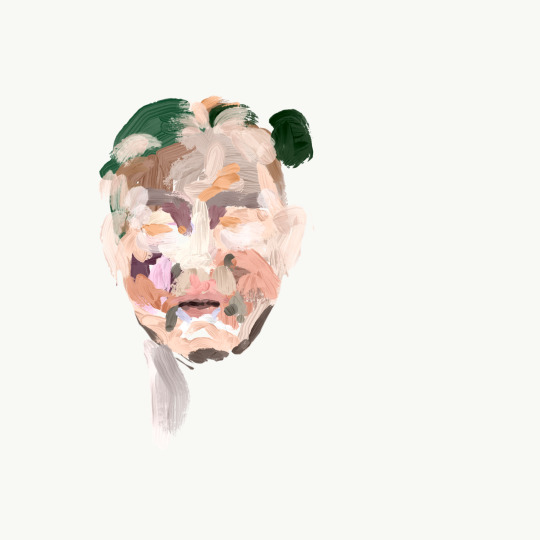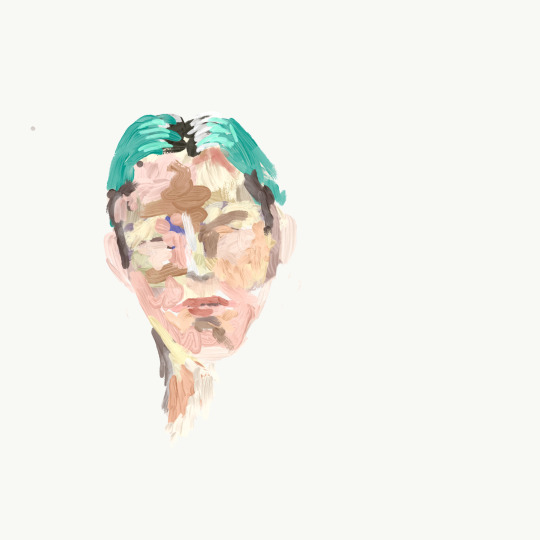Don't wanna be here? Send us removal request.
Text
Independent Work
This cycle’s independent project took a departure from my focus on the body. While referring to the body indirectly by considering the lived experience, I continued my study of natural light and shadow through small scale paintings based on photographed images taken outward from my living space.
While the photographs aimed to highlight colour and light, they turned more towards intrigue and voyeurism, in many of the source photographs, I observe and interpret occupied space using digital zoom on a smartphone camera which gives the ability to view the subject without knowledge and to a certain extent, the blur obscures recognition and identity.


0 notes
Audio
Audio of “Discussion”
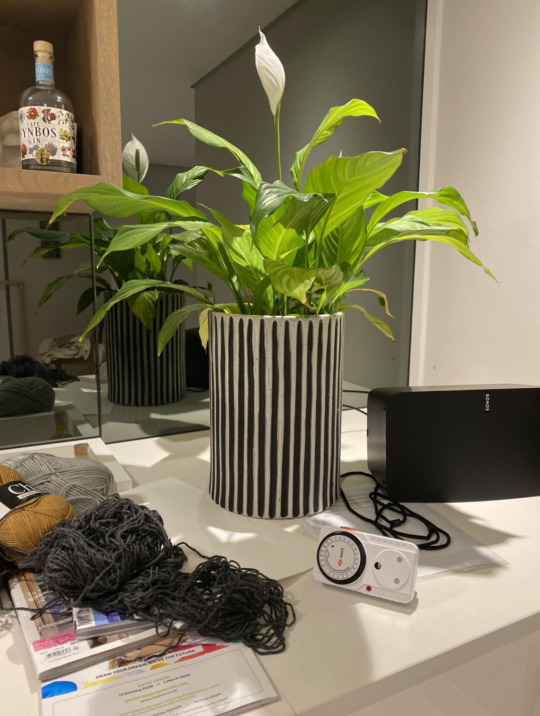
Photo of Plant

Documentation Collage

MindMap
0 notes
Text
TD200 Assemblage Task
Speaker

Glue

Collage

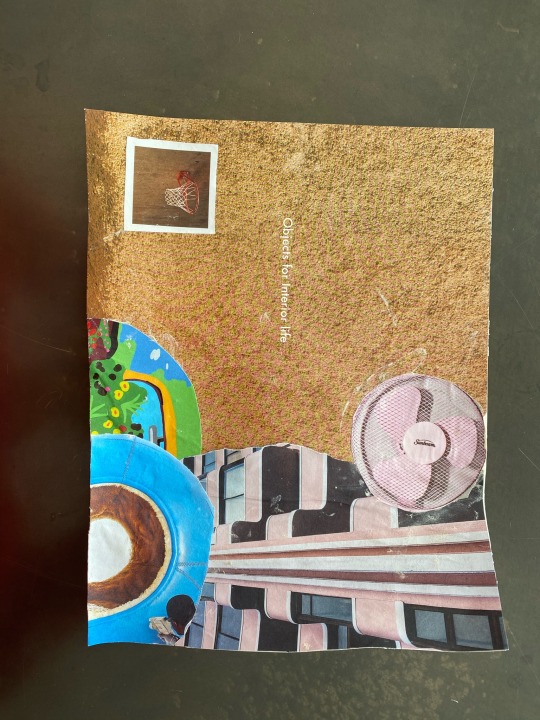
Knots
Stopper Knot

Slip knot

Bowline Knot

Square Lashing

Assemblage


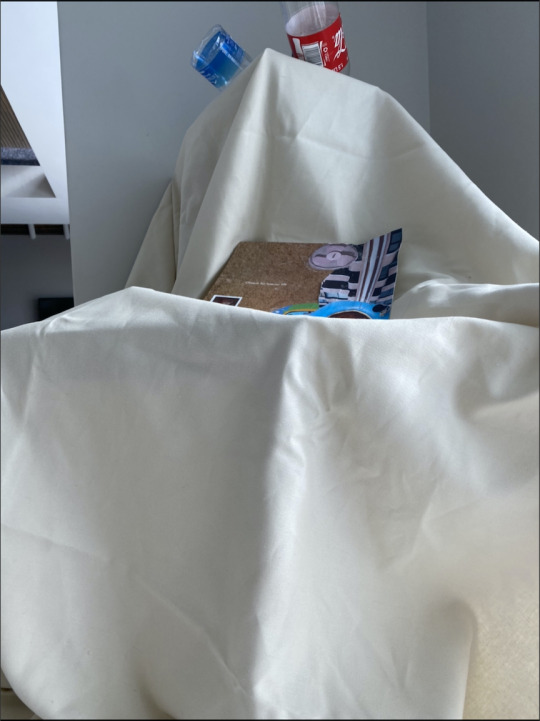
0 notes
Text
Artist’s Statement
I consider my work to be categorized as multimedia, only because I have been experimenting with a range of mediums without committing to one fully. However, the work does put emphasis on photographic elements and depiction of form.
In the last six months, I have used sculpture, photography and painting to explore my identity, which I think has come to an end. I found the process laborious and self indulgent. I do however intend to focus further on built and fictional narratives through staged photography as well as garment elements in order to tie these narratives to a context.
I find the building of fictional narratives in photographic stills particularly interesting because they allow a narrative to be expressed without the necessity of the subject having great skill or the need for much assistance. This means, using various semiotic elements, a photograph is able to evoke a sense of a certain time, place or feeling, which can be a powerful tool.
With this particular series of works, I wanted to explore identity through change and motion in various suburban and urban contexts. The forms evoke a sense of hesitation, growth and morphing.
0 notes
Text
Resources in Woodstock
LT Discount Paint Wholesalers


Interesting things:
Fragile Tape
Pantone strips
Spray Paint
Cape Twine and Bag
Interesting things:
Callaco and canvas
The Boardstore
Interesting things:
Off cut boards for painting
Deckle Edge
Interesting things:
Literally everything,
But mostly print making ink,
Small printing press
Etching papers

Plastipak
Interesting things:
Storage boxes for display
Jars
0 notes
Text
Library Task 16.02.2020
Artists Relevant to my current interests and practice
Jane Alexander
Thomas Ruff
Alexander McQueen
Techniques Relevant to my Practice
Photography (Long Exposure specifically for this project).
Sculpture (Specifically Bodily Forms)
Material Construction (Garments etc)
Bibliography and Other Research
Alexander, J. (2002). Jane Alexander. Ostfildern-Ruit: Hatje Cantz.
Guggenheim. (2020). Storylines: Contemporary Art at the Guggenheim. [online] Available at: https://www.guggenheim.org/exhibition/storylines-contemporary-art-at-the-guggenheim-2 [Accessed 16 Feb. 2020].
Kramer, M. (2011). Thomas Ruff - Modernism. Heidelberg, Neckar: KEHRER Heidelberg.
Mills, C. (2020). Materiality as the Basis for the Aesthetic Experience in Contemporary Art. PostGraduate. University of Montana.
Panas, L. and Meloy, M. (2011). Lydia Panas - the mark of Abel. Heidelberg: Kehrer.
Slone, I. (2012). The Nature of Alexander McQueen: The Aesthetics of Fashion Design as a Site of Environmental Change. Undergraduate. University of Waterloo.
Tillmans, W. and Riemschneider, B. (1995). Wolfgang Tillmans. Köln: Benedikt Taschen.
Tormey, J. and Whiteley, G. (2009). Telling stories. Newcastle: Cambridge Scholars.
Wilcox, C. (2015). Alexander McQueen. London: VA Publishing.
0 notes
Text
Gallery Questions
Smac:
Are the hanging discrepancies deliberate?
Are there any original materials, or is everything found?
Are the shadows created by the hanging lights deliberate?
Were there works omitted from the selection, the exhibition seems to be wanting for number of works
Blank:
How does the use of installation on the floor affect the viewing experience?
Do the artists choose who to exhibit with?
Why did sabelo choose a relatively constant, small scale for his work?
Stevenson:
Is the curio-ness of the carvings intentional?
Is the text type intentional or native to the artist?
Is the language (English) native to him?
0 notes
Text
Part C: 3 Objects, Nine Meanings, I think.


The placement on a side table makes use of these objects as crockery or ornaments.

Placing three objects on a pristine pillow immediately skyrockets their financial value.
1 note
·
View note
Text
Questions for 29 October
Part B
Question 1: What do you think a curator is, and what do they do?
Answer: I understand a curator to be a person that arranges a number of works of art in a specific space or context in order to deliver a narrative to the viewer or atleast to achieve cohesion.
Question 2:
1) A curator was described as a creative rival to the artist.
One would assume that a curator would be an interpretative facilitator to an artists work rather than a creative rival.
2) Exhibition or Gesamtkunstwerk became more about the curator than the work.
I get the sense from this article that ego plays a big part in major exhibition curation.
3) A show with bad art can still be “fantastic”
I find this point interesting, but I disagree, if a shows aim is to show off its pieces, and some of the pieces are bad, the show is a failure. However, if a shows aim is to simply put on a show, and parts of that show happened to be bad art objects, but the overall impression was achieved, then a show is a success.
Question 3:
Okwui Enwesor: Enwesor has relied on a change agenda as a springboard for curatorial actions.
Koyoh Kouoh: African Artists seem to matter to Kouoh, difference seems to be what highlights discrepancy between western born artists and other. Lumping artistic practices is wrong and interpretation seems to be inherently influenced by context.
Simon Njami: Njami believes the presence of African artists in major exhibitions was inevitable.
Points of difference:
Njami Vs Enwesor
Njami believes that a curator must have a plan and know where they want to go before they start, Enwesor believes that simply acting and going from there is enough. (This is a bit of a push)
Njami Vs Enwesor
Njami believes African Art is inevitable, institutions do not need to make space for African Art because it is a force unto itself, however Enwesor believes institutions ought to initiate the facilitation of space for curators and artists.
0 notes
Text
Final Tutorial Assignment
*Disclaimer: I made use of a radical character to produce this piece of writing, it does not represent the views held by me, Andrew Purdon*
Post Digitalism Manifesto
(This piece is written Post Digitalism high priest, Rick Andmortar, a radical traditionalist thinker from Highville, Texas).
In an age overcome by a digital presence, Post Digitalism offers the artist a space to disconnect and displace a work within the context of the digital space.
The movement aims to re-traditionalize work and bring artwork back to a specific process of research, investigation and execution.
The Digital Age
The digital age has borne a stage of postmodernism, where art critiques, mocks and pays tribute to what is already known and discovered. This is as a result of overexposure to information, everything is connected, and so is everyone. Hence, original ideas do not exist. Everything is inherently a response to something that has come before, a constant evolution of preexisting ideas. While this is helpful for the world to keep on progressing, there is opportunity for a movement to exist parallel to society, but isolated. This would mean that two plains of advancement can occur
The digital age, brought to the masses in the early 20th century through the use of the printing press and the radio wave. This originated the idea of a cultural identity on a massive scale, and made it easy for cross culture collaboration and appropriation. While appropriation is a practice as old as the Roman Empire.
Research
Research into possible artworks focuses on innovation independent of the digital space, a return to originality and away from interpretation. Isolation is key. For an artist to truly engage in the work, they must alienate themselves from the digital(and thus, society) and must rely heavily on their senses and minimally on the mind. Inherently the mind exists within context, knowledge is only relative.
An important part of the research process is an acceptance of originality regardless of its validity. It is said that regardless of how many ideas one feels to have originated, someone has thought of the idea before. In this vein, should one alienate themselves to a large extent, their ideas would start becoming organic and innately original. Regardless of whether or not one shares a similar or identical work to another artist, as long as the two artists have remained completely digitally and societally isolated, both works would be valid, as both of the artists would have had different processes in order to come to the final piece. It could be said that the analysis of two works in relation to each other would be of value because it would reveal base similarities in the human perspective regardless of context and nurture.
Criticism
One might argue that as a result of the isolation, a work loses validity in the context of a society so firmly set in a highly digital understanding. However, post digitalism aims not to relate to the viewer within a specific context, but rather at the level of a base understanding of the human and animal experience and connection with the world.
It is true that one can never be truly separated from technology, as materials for art making are affected by technological advances, but putting a specific time threshold on the definition of the materials used in the work, enables the artists to use materials which come a context but not an explicitly digital context. For instance, any art materials would be allowed if produced before the invention of the graphic user interface.
The Free Generation
A group of committed believers have banded together to purchase a large portion of land (+- 1 million ha) in the Australian outback. This land will be used for large scale experimentation on offspring of the group. Each of the offspring will be raised in isolation with one guardian. The stipulations are as follows: each child will be raised without speech, clothing and creature comforts. The only allowed goods will be things necessary to survival. From the age of three, each child will be put in an enclosed space, with various tools and surfaces for four hours a day. This will increase by one hour every two years, until they are working for 14 hours a day. Each year, different materials will be introduced making sure that there is progression to the learning. The children will be able to access their past works at will, but will not be able to tamper with them. Taking culture and community away from the children will strip bare the creativity in their genes. Work will be created like never before and this work will open up a whole new realm for society to peer into.
Ethical concerns
As a group of absolute enthusiasts, we believe that the psychological sacrifices made by our offspring are warranted by the opportunity presented to society, to have insight into what the world would look like post “self obsession”, post “information overload” and post digital. These subjects will never be seen or surveilled, their work will simply be documented and studied by institutions around the world. The only human interaction the children will have (besides their guardians) is for the purpose of reproduction, at the age of 21 years old, this is to ensure the continuation of the experiment and to allow for the evolution of the children’s genetic makeup. It is our hope that the children have some level of understanding of their sacrifice, that by taking them back to a place where anything is possible, they will be create extraordinary things or recreate something in a more effective way. We hope that human curiosity causes the offspring over many generations to act as a sounding board for humanity, a place where industry leaders can look to for inspiration as well as mistakes and undiscovered parts of the human potential.
While movements in the past have been classified in relation to one thing or another, post digitalism is classified as the return to instinct, a return to impulse and a return to the human’s need to create. It is imperative that a space is created for humans to start again, to rediscover and to discover the previously undiscovered. If no space is given for this movement to thrive and evolve, the extinction of the human race will be imminent!
Idea for Artwork:
As starting point for this movement, and to highlight the dangers of over exposure to mass culture and the digital, three artists will each spend a year in a hotel room, not interacting with the outside world. Each artist will be constantly exposed to a different type of digital media:
Artist 1: Social Media (Facebook, Instagram, Twitter)(without the opportunity to post anything)
Artist 2: News (Newspaper, News Channels and Websites)
Artist 3: Entertainment (sitcoms, movies and books)
During this time the artist will only have access to art materials and will have to make 2 works a day for the entire period. At the end of the year, each artist will have a show exhibiting the works chronologically to illustrate how their perspective was warped over time by technology.
0 notes
Text
Collage Exercises


Personal Archive 1

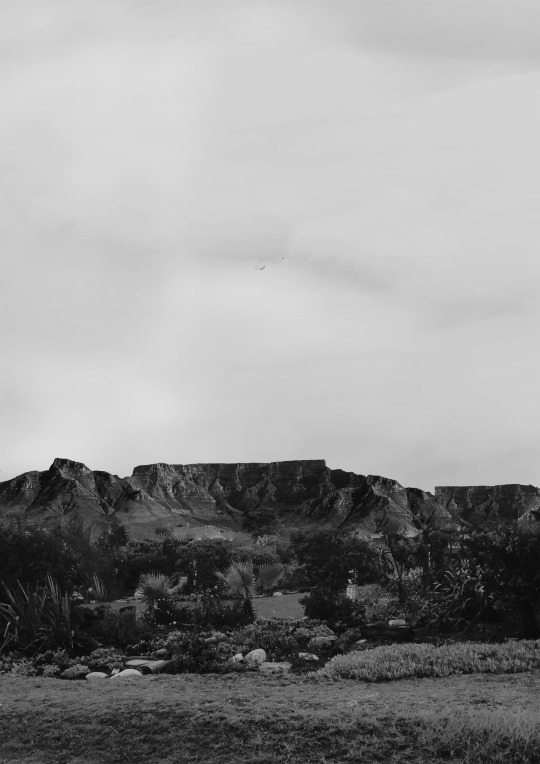
Personal Archive 2


Public Archive 1


Public Archive 2


Narrative Change W/ Lion’s Head


Photoshop Tool Share Exercise
0 notes
